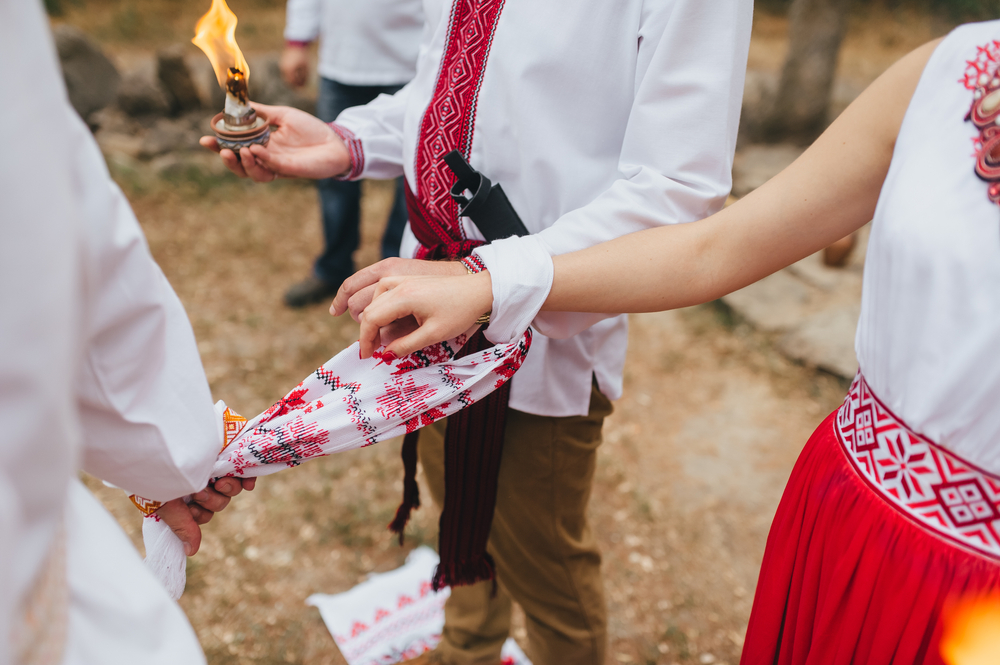
It may surprise you to know that Paganism is one of the fastest growing religions in the United States. Studies on religious trends concur that between 1990 and 2008, Paganism grew by a remarkable factor of 42 times, from 8,000 people identifying as Pagan in 1990 to 340,000 in 2008. More recent estimates revealed that as many as 1.5 million Americans claim affiliation with a Pagan religion. In addition, you might be curious about what to expect at Pagan weddings; you might also be thinking of incorporating some earth-centered elements into your own ceremony. This discussion will offer an overview of Pagan weddings and how the ceremony might differ from more traditional celebrations.
Historical Misconceptions
Technically, a Pagan is a person with religious beliefs outside those of Christianity, Judaism, or Islam. Paganism is a catchall term that encompasses many different subgroups originating from Celtic and other European cultures. Followers deeply revere nature and believe that all living things–including animals, plants, oceans, and weather–have a soul.
Regularly mislabeled and misunderstood, Paganism was wrongly characterized centuries ago as Satanic worship. Satan doesn’t exist in Pagan culture; it is a Judeo-Christian construct. In practice and belief, Paganism is a peace-loving, nature-worshipping, polytheistic religion. Pagans are accepting of other belief systems and of any practice that brings followers closer to nature and the Divine. “Do what you will, as long as it harms none,” is a common Pagan motto.
Pagan Weddings
Pagan weddings don’t follow a strict format, though several core elements are often present. The attire is often less formal than traditional wedding garb, and pagan weddings are generally held in nature.
- Casting the circle – Pagans strongly value community, and they often gather in circles. This creates a sense of equality of all beings, with no front, back, left, or right. An officiant will cast the circle by honoring the directions and the four elements: earth, air, fire, and water.
- The altar – An area that holds symbolic items, such as a cup, a knife, and a trowel is an altar. Items may represent the elements or directions, such as a candle for fire or a feather for air.
- The family blessing – The tradition of “giving the bride away” is generally replaced with a more gender-equal ritual honoring both individuals’ families and ancestors.
- Vows – The couple will generally recite personally written vows and exchange rings.
- Union rituals – The officiant may facilitate various rituals that honor and symbolize the couple’s union. The couple might cut a small lock of each other’s hair and place it in a special box or sip a beverage from the same cup.
Flowers and homemade wine, called mead, are abundant, and the general tone is a mix of festive and reverent.
Handfasting
Perhaps the signature Pagan wedding ritual is the handfasting ceremony. The term handfasting is used as a synonym for a Pagan wedding. A special cord or ribbon is wrapped around the joined hands. The officiant will offer blessings and advice about marriage and request that guests join in with a predetermined phrase or gesture that affirms their support of the union.
Closing Ceremony
Similar to other traditions, the officiant will announce the couple as married and they will kiss. At this point, they may use the trowel to bury the locks of their hair as a way of symbolizing the release of their union to the Divine. The couple may travel around the circle and greet guests personally. A large party, or reception, often follows the ceremony. It’s a very festive environment with lots of toasts and maybe even a maypole dance.
Pagan weddings can be fun and interesting if you’ve never attended one. In the spirit of egalitarianism, Paganism is compatible with most traditional religions and shares with them many core beliefs. Elements of Pagan ceremonies can easily be incorporated into a traditional wedding. Many couples have enjoyed a handfasting ritual or family blessing as part of their more traditional ceremony.

